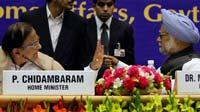NRI’s gain from India’s rupee pain

Non-Resident Indians (NRIs) in Canada and around the world are laughing all the way to the bank as they cash in on an unprecedented fall of the rupee by sending millions of dollars back to their homeland.
“Its been a busy week but a good one for us,” said a teller at a currency exchange in Surrey. “And it looks like it’s going to continue for some time…some of the Indian workers like cooks are taking advances from their bosses to send money back home now,” he said, amid market news of a sharp plunge in rupee value to near Rs 55-56 levels against the US dollar.
While concerns are rife about a slowdown in the economic growth momentum of the world’s biggest democracy, it’s definitely good news for NRIs remitting money from abroad and expats drawing salaries in dollars.
The rupee has not only lost sheen against the US dollar but also against other currencies. One Canadian dollar gets about Rs 54 now, which is nearly 13 per cent more than the exchange on March 1. Similarly, a British pound brings Rs 86.73, (up 10.62 pc), a euro brings Rs 69.30 (up 5.83 pc) and an Australian dollar Rs 54.02 (up 1.75 pc), a forex expert said.
India has one of the largest NRI diaspora in the world after China estimated to be around 30 million. According to World Bank data, India received remittance worth USD 64 billion in 2011 - the top recipient among developing nations.
Windfall gains could also be reaped by expats working in India with income in foreign currencies like the US dollar but incurring expenses in rupee, they added.
This is because in the short term, these employees are set to gain from a weaker rupee as they earn more rupees from their dollar-denominated salaries, an HR expert said.
Besides the NRI’s those people who are planning a visit to India now, have a lot to cheer about as they will get good bargain for their home country currencies now, said reports in the Indian media.
Commodity analysts say that a weaker rupee could also lead to a rise in gold prices, as investors tend to shift their focus away from riskier assets like stocks to the bullion market in such scenarios.
If this scenario plays out, it could result in gains for the existing gold investors.
In the Gulf region, where there is a large Indian population, banks are reporting a 50% increase in their monthly appreciation as Indians are clamoring to send more money back.
Those in high paying white collar jobs are now seeking advances on paychecks while the business community is reportedly remitting a bulk of their savings.
But it’s not all good news with the falling rupee as analysts warn that it will further deteriorate unless policymakers move quickly to put Asia's third-largest economy back on track.
"The Indian rupee's weakness is a symptom and not the underlying problem", which is "policy incoherence, shifting global risk appetite and a comatose government", said Rajeev Malik, senior economist at independent brokerage CLSA.
Ratings agency Standard and Poor's has cut India's credit outlook to negative, growth is slowing and the current account deficit — the widest measure of a country's trade with the rest of the world -- is at a three-decade high.
Prime Minister Manmohan Singh has admitted his squabbling Congress-led coalition must do more to get the once red-hot economy moving again.
"I will be the first to say we need to do better," the 79-year-old said as he presented his coalition's annual report card at a function last week.
Singh is credited with opening India's economy when he was the finance minister in 1991 but his premiership has been tainted by a series of policy U-turns and corruption scandals.
His once ambitious reform agenda has stalled amid coalition infighting, and the economic climate has been further strained by the announcement of new tax policies seen as hostile to foreign investment.
Out of 58 economists and corporate chief executives polled, 53 said the economic situation had suddenly worsened, according to the Associated Chambers of Commerce and Industry of India (Assocham).
"The worst disaster is coming from a huge uncertainty on the rupee value and its freefall. Everybody out there in the business world is feeling shaky," said Assocham, when it announced the survey at the weekend.
Many analysts are eyeing 60 rupees to the dollar as the next big mark for the currency as lacklustre US data and a worsening European debt crisis prompt risk-averse investors to dump emerging-market assets.
A falling rupee stokes India's inflation — already running at over seven percent -- by making imports costlier and makes it harder for firms to service dollar-denominated debt.
It also deters capital inflows, making it much tougher to close the gaping current account deficit, which is already running at 4.3 percent of gross domestic product.
Analysts say India could take steps to temper dollar demand and support the rupee — such as having the central bank sell dollars directly to Indian oil firms, which would lower demand for greenbacks in the foreign exchange market.
Fuel-scarce India purchases 80 percent of its crude from abroad, using dollars.
The government has forecast growth of 7.6 percent for this fiscal year to March 2013. But private forecasters are pencilling in numbers from six to seven percent — enviable by Western standards but not enough to reduce India's crushing poverty, experts say.
Investment house Morgan Stanley said it expects growth for the fiscal year just ended to be 6.5 percent — lower than the government's estimate of 6.9 percent, and below even the 6.7 percent achieved in 2008-09, the year of the global economic meltdown.
Leave a comment









